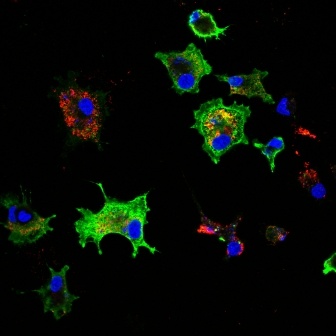Regulatory Functions of Bone Marrow-Derived Macrophages
7/8/2014
Evaluation of Classical, Alternative, and Regulatory Functions of Bone Marrow-Derived Macrophages. Davis BK. Methods Mol Biol. 2013;1032:79-89. doi: 10.1007/978-1-62703-496-8_6.
The role of macrophage subsets in allergic diseases in vivo is under current investigation. These cells perform sentinel functions in the lung, the skin, and the gastrointestinal mucosa. Their interface with environmental cues influences the initiation, progression, development, and resolution of allergic diseases. Researchers often culture bone marrow-derived macrophages to study macrophage biology. The in vitro maturation of bone marrow precursor cells into mature macrophages is a powerful technique used to study macrophage biology. The polarization or differential activation of macrophages into functionally distinct subsets can provide insight into allergic disease pathologies. Classically activated, alternatively activated, and regulatory macrophages have different effector functions that can affect allergic responses.
Understanding macrophage biology during allergen exposure, host sensitization, and disease progression/resolution may lead to improved therapeutic interventions. The purpose of this chapter is to outline protocols used for the culture and polarization of classically activated, alternatively activated, and regulatory
macrophages. In addition, the techniques to measure macrophage-specifi c effector molecules by ELISA, RT-PCR, and immunoblotting are reviewed.






